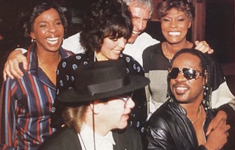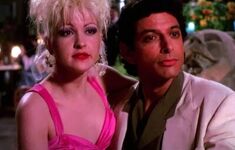
December 1 is World AIDS Day, an intentional day dedicated to raising awareness to HIV/AIDS and mourning those who have died of the disease.
In June 1987, during the peak of her popularity and, sadly, the height of the HIV/AIDS crisis, pop star Cyndi Lauper released “Boy Blue” as the fourth single from her career-defining second studio album True Colors.
The song proved to be minor hit for Lauper, charting at #71 on the Hot 100, with proceeds going to various AIDS organizations, which were still severely underfunded at the time.
Lauper explained that she wrote “Boy Blue” for her close friend, Gregory Natal, who had recently died of AIDS. The song’s title came from a poem by 19th century American poet Eugene Field called “Little Boy Blue.”
“I tried to write about my friend. I knew he really loved ‘That’s What Friends Are For.’ I know that maybe he would have liked me to do a song like that,” Lauper later recalled, referring to the Dionne Warwick, Elton John, Gladys Knight, and Stevie Wonder collab released in 1985 a charity single for AIDS research and prevention.
Related:
Lauper continued, “Instead, I wrote about him personally. I don’t know that my lyrics were good enough. I don’t know that anything was good enough. Maybe it was too personal. I don’t know. But I wrote it for him.”
Lauper continued, “It was because of him that I keep trying to do stuff. And other friends. So many talented people, so many of our friends, and so many gifted people have passed on. Or struggle everyday. Just to live. And it was because of my friends and others that I do this.”
In 2019, 32 years after the release of “Boy Blue”, Lauper took to social media to share more about the song and her late friend Gregory:
Tomorrow is the 32nd anniversary of “Boy Blue.” Fitting since it’s the kick off for Pride Month as well. While my friend Gregory Natal was in the hospital, dying at the impossibly young age of twenty-seven, he asked that I write a song for him. He wanted me to release it in the spirit of “That’s What Friends Are For.” I thought, “What, like Burt Bacharach? Yikes, that is a tall order.” So I wrote “Boy Blue.” I poured out my heart, and my liver, into that song. It was tangled up in so much of my sorrow and so cloaked in my sadness that I don’t know if it was good enough for him. What do you think? RIP Gregory.
The music video for “Boy Blue” was taken from the Cyndi Lauper in Paris HBO special. It was directed by Andy Morahan, who previously directed music videos for her songs “Change of Heart” and “What’s Going On”, as well as music videos for a slew of other LGBTQ+ artists and allies, including Pet Shop Boys, Wham!, George Michael, and Elton John, plus Tina Turner, Jody Watley, Mariah Carey, and many others.
Speaking about performing the song live, Lauper once said, “I used to cry every night when I sang that song. I was so mad. You know, you go through so much and I was so mad. I was mad that my friend was gone, I was mad at the way people treated me.”
“We didn’t know what the hell it was. We didn’t know anything. Then all of a sudden it was out in the open and everyone was talking about it, but when he first told me about it I didn’t understand. I didn’t know. And then all of a sudden my friend was ill and then… It was so hard.”
She continued, “I was so angry and every night I would sing my guts out, but you’d open your eyes after and it was the same. But sometimes, in a lot of ways, it was healing.”
The True Colors album would go on to sell over 7 million copies worldwide, becoming Lauper’s second best-selling release. The title would later serve as the inspiration for the name of her charitable foundation True Colors United (formerly True Colors Fund), launched in 2008 to help combat LGBTQ+ youth homelessness.
Watch.
Related:







